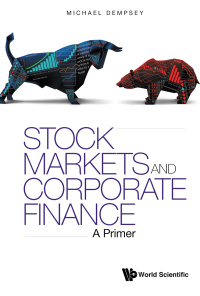This case presents an opportunity for us to calculate beta using the "bottoms-up" approach described by Professor Damodaran, as a reality check on the "top-down" regression betas provided in the case. We will also revisit some of the other issues that confound practitioners when they set out to estimate a company cost of capital. After watching the recorded presentation and the Excel demonstration, you should be ready to tackle this assignment. STUDY QUESTIONS FOR THIS ASSIGNMENT 1. (5.0 points) Why is it important to use the market value of equity rather than the book value in calculating the component weights on the sources of capital? 2. (5.0 points) Identify which regression beta is more relevant (and why): a. The popular estimate based on monthly price data over the previous 5 years, described on p. 192, paragraph 2, or b. Sheppard's own calculation of beta, based on daily price data for the last year, described in footnote 5 on p. 192. 3. (5.0 points) Justify which Treasury yield is the best estimate of the risk-free rate in a cost of capital calculation. 4. (5.0 points) Why is there so much difference of opinion regarding the estimate of the average Market Risk Premium? 5. (5.0 points) Determine the most appropriate bond yield to use for the cost of debt and justify your choice. 6. (5.0 points) Why do we calculate an after-tax cost of debt for the WACC? 7. (20.0 points) Complete the template. Discuss the conditions under which a larger sample (the three comparable firms) might provide better information than the firm's own calculated WACC. This case presents an opportunity for us to calculate beta using the "bottoms-up" approach described by Professor Damodaran, as a reality check on the "top-down" regression betas provided in the case. We will also revisit some of the other issues that confound practitioners when they set out to estimate a company cost of capital. After watching the recorded presentation and the Excel demonstration, you should be ready to tackle this assignment. STUDY QUESTIONS FOR THIS ASSIGNMENT 1. (5.0 points) Why is it important to use the market value of equity rather than the book value in calculating the component weights on the sources of capital? 2. (5.0 points) Identify which regression beta is more relevant (and why): a. The popular estimate based on monthly price data over the previous 5 years, described on p. 192, paragraph 2, or b. Sheppard's own calculation of beta, based on daily price data for the last year, described in footnote 5 on p. 192. 3. (5.0 points) Justify which Treasury yield is the best estimate of the risk-free rate in a cost of capital calculation. 4. (5.0 points) Why is there so much difference of opinion regarding the estimate of the average Market Risk Premium? 5. (5.0 points) Determine the most appropriate bond yield to use for the cost of debt and justify your choice. 6. (5.0 points) Why do we calculate an after-tax cost of debt for the WACC? 7. (20.0 points) Complete the template. Discuss the conditions under which a larger sample (the three comparable firms) might provide better information than the firm's own calculated WACC







